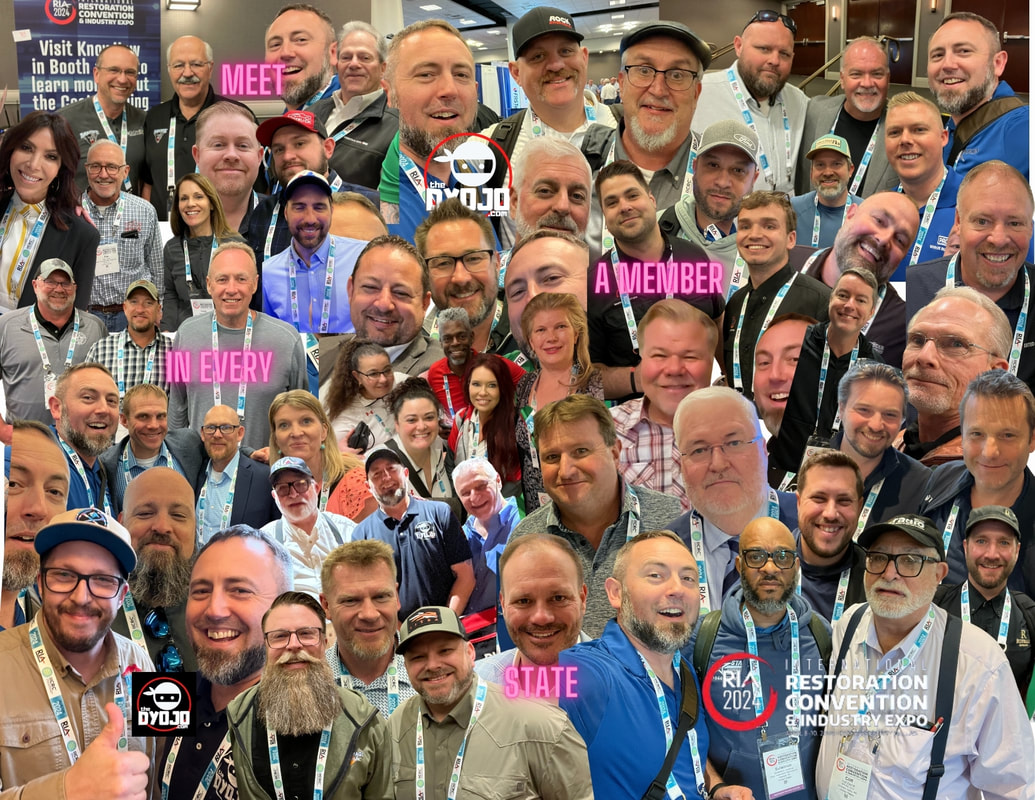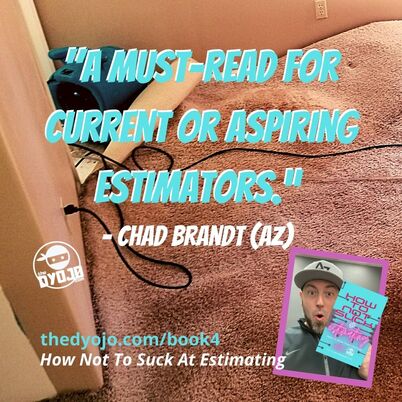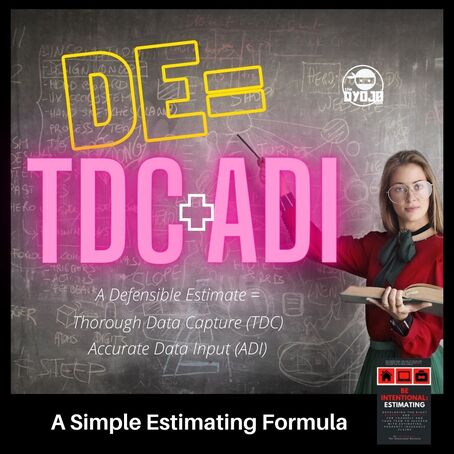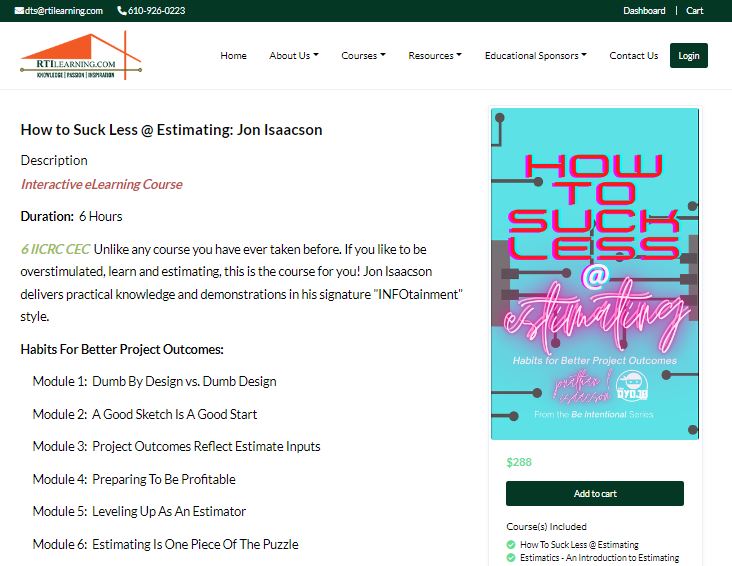|
We recap some of the highlights from the Restoration Industry Association (RIA) Convention and Expo with our friend Ed Cross. Items of interest for property restoration contractors include an apology from the stage by Xactimate/Verisk and a face the advocate with four TPAs from the insurance claims ecosystem; Contractor Connection, Alacrity, Sedgewick, and Westhill. In Episode 117 of The DYOJO Podcast 0:00 Sgt Ed Cross 2:23 Recap of Episode 116 3:20 Waste Diversion Tracking 4:31 Insurance Denied by Drone 6:09 New Position Statements from RIA 9:46 Xactimate Apologizes to Restorers 16:32 Weaponizing Xactimate 24:28 RIA 2024 Highlights Clips were used in this Episode from
* InsurTech Trends, Integrations, Pricing, & More - C&R Magazine / Restoration Today Michelle Belvins interviews Aaron Brunko - https://www.youtube.com/watch?v=7E0Ja... * Restoration Invoice: PAID - Restoration CrossCheck (Sgt Ed video) - https://www.youtube.com/watch?v=PVSUe... QUESTIONS: Are there restoration contractors in Rhode Island or South Dakota? Read the article in C&R Magazine Watch the recap video on The DYOJO YouTube
0 Comments
Contractors are frustrated with the insurance claims process. Many have found their villain in the various estimating software programs. Of particular note, Xactimate draws the ire of property restoration contractors. One doesn't have to search far to find a social media rant about the inefficiencies of estimating tools. BUT, has the listener ever silenced the impulse for blame long enough to consider that Xactimate, and similar estimating resources, are primarily communication platforms? Join us for a discussion that will help listeners update their mindset and habits regarding estimating tools and approaches. Listen to The DYOJO Podcast as we share insights for better insurance claims and construction outcomes. Clips from The DYOJO Podcast, Episode 111, A Simple Formula for Better Construction Estimates. Xactimate can be a Common Estimating LanguageIn the insurance world, Xactimate estimates are written room by room, and line by line. It's not a format that many contractors outside of the restoration space are familiar with. Nor are customers. They're not used to seeing a 28 page bid for a two room project. But there is one party that is familiar with this format. The insurance companies. In an insurance claim project, the insurance carrier has the money. So, if they have the money, it is in the best interest of the contractor and the policyholder to consider presenting their estimates in a manner that the insurance company can understand. COMMUNICATION. Learn more from our How to Suck Less Estimating Course. The Xactimate Sessions PodcastXactimate estimates are built with a diagram or a sketch. There's actually a lot of really helpful calculations, scope notes, and different project elements that can be derived from this tool. If you are new to Xactimate or trying to teach your team you will find value in a series we produced called The Xactimate Sessions. You can search for Episodes 65 through 79 of The DYOJO Podcast. The Xactimate Sessions
One of the our prior videos on sketching will help owners and managers who are training new restoration team members to sketch in Xactimate. From Estimation to Project ManagementDoes your team regularly create an estimate that the insurance company, the entity with the money, the customer, the entity with the pen to sign the contract, and the production team, the ones who have to complete the work, all understand? COMMUNICATION. If one or all of those parties don't understand the scope you need to fix your estimating process. The estimate itself is a byproduct of a series of processes that start with client intake. A simple topic and process that we discussed on Episode 86 of The DYOJO Podcast. Site observations and the notes that go to the estimator are critical pieces of communication. Whether that's A) the same person, IE a write and run estimator, or B) there's a central estimator within the company. Or, as many companies are finding success with, perhaps your team utilizes C) remote estimating services like our sponsor Epic Estimates as an external resource. The details include all the data from the site. As we share in our estimating course, these details have to be communicated thoroughly thorough data capture. Data captured and communicated thoroughly to whoever's going to create the estimate. It must be thorough because it creates a series of following steps which include, the customer being able to understand what you're contracting for. Clarifying what is and is not in your scope. If insurance is involved, this thorough data helps them understand what they are responsible for. Construction Estimating AccuracyAccurate scope leads to accurate construction cost estimates. Thorough Data Capture (site observation and transfer of details) leads to Accurate Data Input (estimation). When the scope and cost gets down to the production team, it's very important that whoever is writing an estimate always does so with the production team in mind. Clarity, consistency, and accountability, which is something that we go over in detail in our last book, How to Suck Less at Estimating by Jon Isaacson. This book is also a course available online through our friends at Restoration Technical Institute. This course has six modules, which reflect the six chapters in this book. If you sign up for the course you get a free PDF copy that is designed to correspond with the course on how to suck less at estimating this book is available on Amazon. If any of these topics hit home, or seem to be helpful to yourself for your team, you should tune into the full discussion from episode 111 of The DYOJO Podcast Everyone who starts a business knows profitability is important, but too often contractors treat it as optional. This podcast goes along with a recent C&R article titled "The 4 Modes of Profitability for Contractors." It was the first in a series to attempt to help new entrepreneurs, in-progress contractors, and aspiring persons in a position of leadership to better grasp the essential nature of overhead and profit (O&P) within the skilled trades. If a contractor charges for some level of overhead and profit (O&P) they will have a fighting chance every year and will be ahead of many of their competitors." - Jon Isaacson In this episode of Restoration Today, Jon Isaacson, the author of the first article and orchestrator of the entire series, walks through how contractors can help themselves and their team members form better mindsets and habits as they think through the four modes of profitability for contractors.
The video and article discuss The 4 Modes of Profitabliy for Contractors:
This is the first in a series of articles; upcoming features in C&R Magazine will include input from Ben Justesen, Anthony Nelson, and Ed Cross. Ben will help contractors to understand their numbers and incorporate them into their true labor burden (Labor + O&P). Anthony will share his vast experience in tracking material, equipment, and other cost realities to more accurately incorporate these items into your estimating process (Materials + O&P). Ed Cross has some exciting news to share from the frontlines of overhead and profit collection. All of these concepts will help contractors to determine the appropriate markups (what you add) to achieve their margin (what you make) goals. The best-selling book, How To Suck Less At Estimating: Habits for Better Project Outcomes, by Jon Isaacson is NOW AVAILABLE as a six module training course from Restoration Technical Institute. Project outcomes in the skilled trades are tied to the estimating process. Good estimating is marked by the thoroughness of data capture (site observation) and the accuracy of data input (bidding). Author Jon Isaacson, The Intentional Restorer, shares his two decades of professional experience to help anyone involved with, or interested in, the art of estimating to shorten their DANG learning curve for improvement. Habits For Better Project Outcomes:
Included in your purchase:
Unlike any course you have ever taken before. If you like to be overstimulated, learn and estimating, this is the course for you! Jon Isaacson delivers practical knowledge and demonstrations in his signature "INFOtainment" style. How To Suck Less At Estimating, was written for:
Early Reviews for This Book:
What Contractor Isn't Familiar With This Frustrating Story... A contractor takes a call for service from a new client. After a brief conversation, they set up a time to inspect the customer's home. The contractor drives to the worksite (30 minutes*). While onsite the contractor spends 30-60 minutes* discussing the project with the customer, performing a detailed inspection of the conditions, taking measurements, documenting scope items, and listening to what the customer wants to have completed. The contractor drives back to their shop (30 minutes*). The contractor spends at least 30-60 minutes* researching products, creating an estimate with sufficient scope and cost details to reflect the vision of the customer and sends that to them for review. After a day or two the contractor follows up with the customer, there is a delay in response, and finally, the customer notifies them that while they appreciate all of the details the contractor provided they were able to hire someone who could do the work for significantly cheaper. Is this just a "cost of doing business" or is there a BETTER WAY? Episode 91 of The DYOJO Podcast will be part 2 of a discussion that we started in Episode 90 on whether contractors should charge for their estimates. For Episode 91 we will continue to review various approaches by construction professionals including providing FREE estimates, getting contracts signed prior to dispatch, using a Letter of Intent (LOI), or other means. At the end of the day, the contractor does well to develop and consistently follow a thorough screening process for all new clients so that they know what they are committing themselves to. If the contractor does not value their own time, NO ONE ELSE WILL. In this video promo for Episode 91 of The DYOJO Podcast:
Thursdays are forThe DYOJO Podcast - helping contractors shorten their DANG learning curve for personal and professional development. KEYWORDS: estimate, pricing, waste, contractor, article, clients, government affairs committee, restoration, industry association, feedback,
Do you see wasting time as a challenge in your business? In our construction company in Puyallup, Washington, this has been a consistent topic of discussion and an area that we are working to lessen this drag on productivity.
Should Contractors Charges for Estimates?In response to questions from contractors on whether or not we should be charging for estimates, we started a discussion on Episode 89 of The DYOJO Podcast. I made a promise that we would dive a little bit deeper into the hybrid concept which we call the Letter of Intent (LOI). As entrepreneurs we want to grow our companies. As business owners we want to lay a foundation for long term success. As contractors there is this battle against a perceived industry norm (or standard) that estimates must be free. We hope you will recognize what many skilled tradesmen who have become business owners are practicing, that you DO NOT have to uphold the MYTH that free estimates are just the of "the cost of doing business". You DO NOT have to uphold the MYTH that free estimates are just the of 'the cost of doing business' The Cost of Doing BusinessThere is a battle between bidding work, producing work, getting paid for work completed, and all the things in between that affect our ability to do more. Your time and expenses for inspecting and estimating a project are real. If you do not recoup those costs in some form, you are feeding the MYTH that estimates are FREE. As a small business owner you wear multiple hats. You only have so many productive hours in a given day. Consider this entrepreneurial dichotomy:
I shared many of my thoughts on how we identified wasting time as an issue in our construction business on the Restoration Rundown podcast from Ironclad Restoration Marketing. The Letter of Intent (LOI) is something we have discussed internally for some time and decided to launch at the beginning of this year. To my surprise, during my first call introducing this process to a customer they responded, "That makes sense, send it over and we will sign it." The host, Ben Ricciardi has also authored an excellent book, The No Bulls**t Guide To Internet Marketing For Restoration Contractors. That title tells you exactly what's in the book. The Contractor's Letter of IntentThere's a lot of back and forth on socials whether contractors should be charging for estimates. Before we can argue this point, we need to define a few terms.
If you provide something verbal, an educated guess of an estimate, based upon rough details provided by the client, then a FREE (non-binding) estimate may be appropriate. "Based on what you have described to me, your rough cost would be in the range of $______ and $______. If it sounds like we understand your scope and the numbers are in your budget range, would you like to discuss the next steps for having an estimator perform a more detailed inspection followed by a written proposal? There is no such thing as a free lunch, someone is paying. STOP perpetuating the MYTH of the free estimate. In the free estimate scenario, you are paying all of the costs to bid the work. AT A MINIMUM, please screen your clients so that you know what you are getting into. We discussed the Client Intake Process on Episode 86 of The DYOJO Podcast. If you have a clear, thorough, and consistent process for client intake, you will generate credibility with the client and set your team up for success. You will know whether the juice (Free Estimate) is worth the squeeze (Your actual costs of inspecting, writing, and producing a free estimate). |
Words
The DYOJO - helping contractors shorten Archives
June 2024
Categories
All
EstimatingMarketingInsurance ClaimsLeadership |
|
| |||||||








 RSS Feed
RSS Feed
